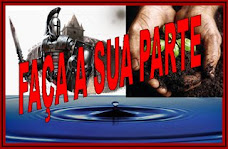Cheap Cocaine Floods
Joao Pina for The New York Times
Published: February 23, 2008
 Bilma Acuña has two sons who are addicted to paco. She and the group of mothers she helps organize have become the only bulwark, it seems, against the irrepressible spread of paco, a highly addictive, smokable cocaine residue that has destroyed thousands of lives in
Bilma Acuña has two sons who are addicted to paco. She and the group of mothers she helps organize have become the only bulwark, it seems, against the irrepressible spread of paco, a highly addictive, smokable cocaine residue that has destroyed thousands of lives in
The scourge underscores a significant shift in both
The surge in drug use has been fueled by porous borders, economic hardship and, more recently, the rolling back of restrictions on coca growing since President Evo Morales took office in
In the five years since residents first began noticing the crude yellowish crystals being smoked on the streets of Ciudad Oculta, a neighborhood of 15,000 people within
Just weeks after first trying the drug, Mrs. Acuña’s son Pablo Eche began selling everything he owned to feed his addiction. He committed violent robberies. In a drug-fueled rage he destroyed his house and then sold the land that was left, ending up freezing and alone on the streets until his grandmother took him in.
“The majority of the kids are using here,” said Mrs. Acuña, 46. “My son saw what was happening with the kids in the streets that were using paco, and he always said he wouldn’t get caught up in that. But he did.”
The challenges to stopping the flow are immense. Fewer than 200 federal police officers patrol
Cocaine seizures and major drug raids in
In
“Cocaine is no longer the drug only of the elite, of high society,” said Luiz Carlos Magno, a Brazilian narcotics officer in the São Paulo State Police Department. “Today kids buy three lines of cocaine for 10 reals,” or about $6. For about $1 in
Paco is highly addictive because its high lasts just a few minutes — and is so intense that many users smoke 20 to 50 paco cigarettes a day to try to make its effects linger. Paco is even more toxic than crack cocaine because it is made mostly of solvents and chemicals like kerosene, with just a dab of cocaine, Argentine and Brazilian drug enforcement officials said. The surge in lower-quality cocaine hitting the streets has resulted from a crackdown by both countries on the chemicals needed to transform cocaine paste, or pasta base, as it is called, into powder form.
Tougher customs rules to track the flow of the chemicals, manufactured in large quantities in both countries, have limited access for Bolivian traffickers seeking to refine the base cocaine into higher-value powder, said Gen. Roberto Uchõa, Brazil’s national drug secretary.
As the quality of Bolivian cocaine has fallen off, the European market, in particular, has rejected it, the general said. So more of it has gone to
Traffickers are cutting the cocaine powder with everything from boric acid to lidocaine to baking powder, leading to severe health effects like infections and blood clots, health officials said. “It is the garbage cocaine that is coming here,” Mrs. Acuña said. “The kids here are smoking garbage.”





Nenhum comentário:
Postar um comentário